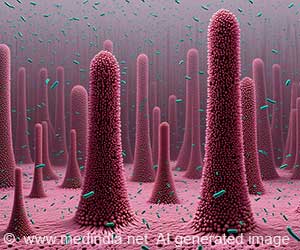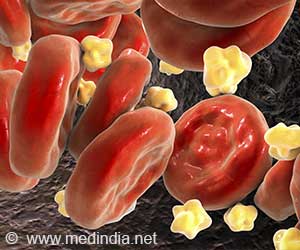Ceramides, a family of lipid molecules may be the key to how Parkinson’s disease could arise, observe scientists.
Highlights:
- Researchers have discovered that ceramides, a kind of lipid molecules, are the linchpins that connect several cellular defects and genes that independently have been associated earlier with Parkinson's disease and suggest a mechanism that can lead to the condition
- The findings could result in novel strategies to prevent or treat the condition in the future.
"Numerous genes have been associated with Parkinson's disease or Parkinson-like diseases; nevertheless, there is still little understanding of how these genes cause these conditions," said corresponding author Dr. Hugo Bellen, professor of molecular and human genetics and neuroscience at Baylor College of Medicine and an investigator at the Howard Hughes Medical Institute. "In this work, we have identified new contributors to the disease that we propose can provide a connection between previously unconnected genes and cellular defects observed in these diseases."
It all started when Dr. Guang Lin, a postdoctoral associate in molecular and human genetics who joined the laboratory of Dr. Bellen started his work on the human PLA2GA6 gene.
TOP INSIGHT
Previous studies have discovered many genes and cellular defects that have independently been associated with Parkinson’s disease. The current study proposes that lipid molecules called ceramides could be the essence that ties all the earlier unconnected discoveries together.
PLA2GA6 gene
- Encodes an enzyme called phospholipase that modifies a type of fats called phospholipids (building blocks of the nervous system)
- Mutations in the PLA2GA6 gene cause neurodegenerative disorders, including Parkinsonism
Study
The fly equivalent of the human PLA2GA6 gene is called iPLA2-VIA which is expressed in neurons and may be other cell types. Lin and his colleagues developed a fruit fly model of the human condition by knocking out the iPLA2-VIA gene or making it non-functional.These mutant fruit flies or those that lack the iPLA2-VIA gene
- Lived about one third of the lifespan of normal flies and had cellular characteristics similar to those observed in humans with mutations in PLA2G6 gene
- They were healthy when they were young and presented with age-dependent neurodegeneration
- Studies showed that there were problems or defects in their nervous system
- They took longer to recover from the impact of mechanical stress otherwise known as bang sensitivity and were paralyzed after the impact compared to normal fruit flies
- They found progressive loss of electrical activity in the visual system of the mutant flies
- The structure of their neurons under an electron microscopy showed photoreceptors with many inclusions (absent in normal cells), structural malformations in most of the mitochondria (often a feature of Parkinson's disease), and dramatic enlargement of lysosomes which are intracellular structures involved in the recycling of membranes and other cellular components.
However, contrary to their expectation, they found that the lack of iPLA2-VIA gene did not produce any changes in phospholipids, but rather increased the amounts of almost all the ceramides that are important for membrane structure and function.
It was now evident that the iPLA2-VIA gene plays a role in the pathway that produces ceramides.
What are Ceramides?
Ceramides are waxy lipid molecules found in high concentrations within the cell membranes. They make up sphingomyelin, one of the major lipids in the lipid bilayer. Earlier ceramides and other sphingolipids were purely supporting structural elements, but now ceramide is known to participate in a variety of physiological functions including programmed cell death or apoptosis, cell growth arrest, differentiation, and proliferation.Ceramide and its downstream metabolites are suggested to play a role in a number of pathological states including cancer, neurodegeneration, diabetes, microbial pathogenesis, obesity, and inflammation.
Further studies
When two drugs that blocked ceramide synthesis (desipramine and myriocin) were tested on the mutant flies, the scientists found that there were decreased amounts of ceramides as well as- Less neurodegeneration
- Less bang sensitivity
- Improved electoretinograms
- Less alteration in the lysosomes
So, it seemed obvious that the increased amounts of ceramides were instrumental in the structural and functional changes or defects of the neurons.
The balanced supply of ceramide-derived lipids in the cell membranes is maintained by reusing (done by retromer proteins) and recycling (done by lysosomes) them. Retromers bring the lipids back to membranes via intracellular trafficking. The remaining lipids are recycled back by lysosomes where they are broken down into ceramides which then go back to the membranes.
In the mutant flies, the increased levels of ceramide stiffen the membranes. The function of the retromer is disrupted and there is more lipid shuttling to the lysosomes to produce more ceramides. This creates a positive-feedback loop that causes ceramides to accumulate and leads to neurodegeneration in flies lacking the iPLA2-VIA gene (due to the disruption of the ceramide balance).
The scientists found that the lack of the iPLA2-VIA protein resulted in less Vps35 and Vps26 (retromer proteins) and caused the disruption of retromer function, implying a new role for iPLA2-VIA protein, that of stabilizing retromers and their function. The researchers also confirmed that the lysosomes actually do extra work and expand due to defective retromers. Also, restoring retromer function resulted in an improvement of the defects that were observed in the mutant fruit flies.
The researchers also found that high levels of alpha-synuclein (a hallmark of Parkinson's disease in vertebrate neurons) lead to the same changes like retromer dysfunction, lysosomal expansion and ceramide accumulation. Again, the defects reduced by treatment with the same drugs that improved the defects observed in fruit flies lacking the iPLA2-VIA gene.
The scientists have thus suggested a new mechanism that can lead to the Parkinson’s disease.
"We show that loss of phospholipase PLA2G6 leads to ceramide accumulation, defects in retromer function, progressive lysosome expansion and, finally, to progressive neurodegeneration with characteristics in common with those observed in Parkinson's disease. And the same drugs that interfere with ceramide synthesis also ameliorate the condition. We also found a place for alpha-synuclein in the disease puzzle," Lin said.
Reference:
- Guang Lin1, Pei-Tseng Lee, Kuchuan Chen, Dongxue Mao2, Kai Li Tan, Zhongyuan Zuo1, Wen-Wen Lin1, Liping Wang, Hugo J. Bellen1, "Phospholipase PLA2G6, a Parkinsonism-Associated Gene, Affects Vps26 and Vps35, Retromer Function, and Ceramide Levels, Similar to α-Synuclein Gain" (2018) Science Direct https://doi.org/10.1016/j.cmet.2018.05.019
Source-Medindia
 MEDINDIA
MEDINDIA





 Email
Email





